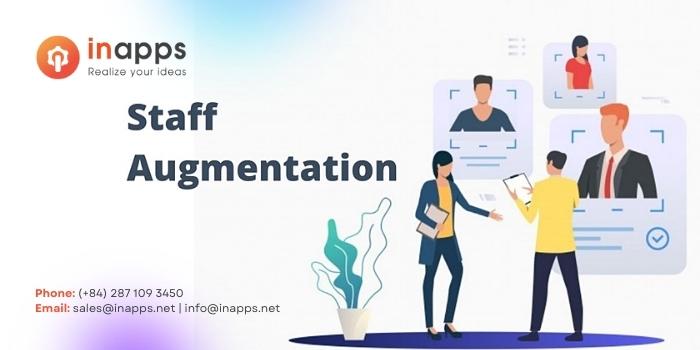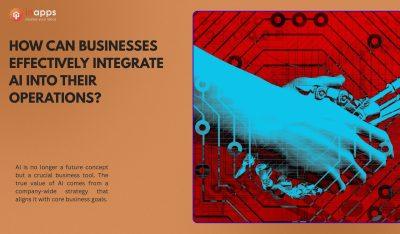- Home
- >
- Offshore News
- >
- Staff Augmentation vs Consulting: Which Fits Your Project Best?
Are you considering expanding your team? Do you hire new permanent employees, or is outsourcing to remote developers through staff augmentation faster and cheaper? Perhaps your project requires a broad range of specialist skills. In that case, consulting might be the better approach.
Deciding between staff augmentation and consulting depends on multiple factors. These include the skills of your existing team, current skill shortages, and your project’s unique requirements. Your business goals, both short and long-term, and your budget also play crucial roles.
This article explores the differences between staff augmentation vs consulting. Understanding each approach’s pros and cons will help you make an informed hiring decision. With the right choice, you can streamline the process and achieve satisfactory outcomes.
1. What is staff augmentation?
IT staff augmentation is an outsourcing model used in software development where companies temporarily hire external professionals. Instead of hiring new full-time employees, a company can use staff augmentation to hire people for short-term projects or to fill gaps in their team’s skills. This approach allows companies to adjust the size and expertise of their workforce.
For example, if a company is working on a new app but lacks developers skilled in a specific programming language, they could use staff augmentation to hire a developer with that expertise. Once the project is complete, or the need for that skill subsides, the augmented staff can be released without long-term employment.
This method is particularly useful for managing project costs and meeting deadlines, as it allows businesses to rapidly scale resources. By using staff augmentation, companies can focus on their projects without expanding their permanent workforce unnecessarily. This helps keep projects agile and responsive to changes in scope or technology.

Advantages of IT Staff Augmentation |
Disadvantages of IT Staff Augmentation |
|
|
2. What is consulting?

Advantages of Consulting |
Disadvantages of Consulting |
|
|
3. Comparing Staff Augmentation vs Consulting
3.1 Costs Of Staff Augmentation vs Consulting
When considering costs, staff augmentation is a more budget-friendly option. It’s tailored for short-term needs and avoids the long-term commitments associated with full-time hires. Consulting, while often pricier, involves comprehensive, end-to-end management of projects. It addresses immediate needs and offer strategic insights that help shape a business’s long-term goals. Tech consultants develop customized solutions tailored specifically to a client’s unique challenges.
3.2 Flexibility of Staff Augmentation vs Consulting
Flexibility is another key factor in choosing between staff augmentation and consulting. Staff augmentation allows you to adjust your team size quickly and efficiently. This model is ideal for projects with shifting requirements. In contrast, consulting offers structured solutions but tends to be less adaptable to rapid changes without formal renegotiations.
For example, imagine you hire a consulting firm to develop a new software system and later decide to add more features. Implementing these changes through a consulting firm requires renegotiating terms and adjusting the project plan, which can slow down progress.
In contrast, using staff augmentation, you can quickly bring in specific experts to adapt to new needs. This method allows for immediate changes under your current management, keeping the project flexible and on track without the need for formal renegotiations.
3.3 Management and Control
In terms of management, staff augmentation keeps control within your in-house team, integrating external talent directly under your established protocols. Consulting teams, however, often have independent processes and management styles, which can reduce your direct oversight but bring new efficiencies.
3.4 Project Duration
Consulting usually takes more time than staff augmentation. This is because consulting involves planning and managing the whole project from beginning to end. It includes not just doing the work but also giving advice and making sure everything runs smoothly for a long time.
For instance, if a company wants to overhaul its computer system, a consulting firm would help plan the project, manage every step, and ensure the new system works well even after they leave. This process is thorough and takes time. On the other hand, staff augmentation is quicker. This approach is about hiring extra help for specific tasks or for a short time. If the same company needs extra programmers to meet a deadline, they can bring them on quickly just for that period. This helps the company finish tasks faster without long-term commitments.
In summary, project duration also varies; staff augmentation adapts well to quick, specific tasks. Consulting is better for longer engagements, offering deep strategic guidance from start to finish.
4. How to choose between staff augmentation vs project-based consulting
Which options between staff augmentation vs consulting are suitable for you depending on your unique requirements.

4.1 Assessing Project Needs
Begin by evaluating the scope and complexity of your project. IT staff augmentation is ideal for smaller projects where you need temporary staff with specific skills. This method allows you to quickly scale your workforce to meet project demands without long-term commitments. On the other hand, consulting services are more suitable for larger projects requiring a mix of specialized and general skills. Consulting can provide comprehensive planning and project management, which is crucial for complex initiatives.
4.2 Budget Considerations
Next, consider your budget. Staff augmentation typically involves a higher hourly rate but saves on long-term employee benefits, potentially lowering overall costs for short-term needs. In contrast, project-based consulting might come with higher upfront costs but includes a range of services that can be more cost-effective for extensive projects. Weigh the costs of both options against the expected outcomes to determine which provides better value for your investment.
4.3 Cultural Fit and Team Dynamics
It’s also important to consider your company culture and how your team will interact with new members. Will your in-house team welcome augmented staff? To ensure smooth integration and collaboration, it’s beneficial to involve your team in the selection process. This helps in choosing augmented staff who not only meet the project’s technical requirements but are also a good cultural fit.
4.4 Gathering Team Input
Encourage your in-house team to share their thoughts and opinions about bringing in augmented staff. This inclusion can ease any concerns they might have and fosters a collaborative environment. By choosing staff who are likely to mesh well with your existing team, you reduce the risk of conflict and increase the likelihood of project success.
This structured approach helps you systematically address the major considerations in choosing between staff augmentation and consulting, so you’ll make the best decision for your specific needs.
5. Wrapping Up
Hopefully, this article’s helped you better understand staff augmentation vs consulting and their unique advantages and disadvantages
There is much competition out there, so it’s wise to do your research and compare your options before making the final choice. This way, you will most likely find the right team for you (at the best price) and receive an outcome that satisfies all parties involved.
InApps assists companies worldwide in combating talent shortages by recruiting and retaining talented software engineers in Vietnam who work as an integral part of the client’s product development team. Our skilled and experienced teams can work on any software development project that you might need, as proven by their high customer retention rate. Browse our website, or fill out the contact form to let us know what skills you’re looking for.
Let’s create the next big thing together!
Coming together is a beginning. Keeping together is progress. Working together is success.



















